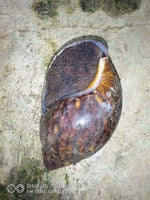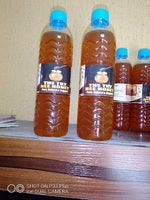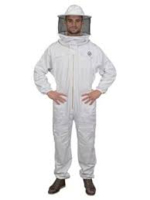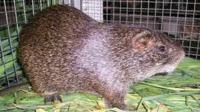Post by Ismail AbdulAzeez on Nov 27, 2017 18:44:02 GMT 1
Occurrence: Increasingly common worldwide 'especially in areas with high altitude or colder environment where gas brooders are needed extensively.
Species affected: Fast growing broilers and turkeys.
Age affected: Especially young, fast growing birds.
Causes: Non-contagious. Influenced by genetics, breeding, nutrition, growth rate, ambient temperature and oxygen content of the air.
Effects: Water-belly, abdominal distension, reluctance to move, dyspenic and cyanotic lesions seen. Affected birds are smaller than normal, and listless with ruffled feathers. Mortality ranges from 0.5-2.0% of the flock.
Causes:
A chronic or acute disease prominent in young, fast growing broilers, ascites is no longer a disease confined to areas of high altitude.
Hypoxia (lack of oxygen) is caused by many agents and leads to constriction of arteries, inducing increased pulmonary arterial pressure which results in right ventricle hypertrophy. The right ventricular valve becomes weak (flabby), which causes back flow of blood and fluid (ascites) in tissues.
It occurs more in males. Hypoxia caused by altitude or gas fumes, carbon monoxide from brooders, worse in winter (tight house), stress of mycotoxins, toxic fat, increased salt in the diet and/or coal tar disinfectants causes ascites. Respiratory disease can aggravate the problem. It is an important cause of broiler mortality at 5-7 weeks of age, in any areas with fast growing broilers, but more .so in high altitudes. Lighting programs (reduced photoperiod) to reduce growth rate during the first 2 weeks of age can reduce mortality due to ascites, flip over syndrome, and leg problems. Feeding mash feed instead of pellets also helps to reduce growth and therefore reduces the problem.
Mode of transmission:
It is noncontagious and influenced by genetics, breeding, nutrition, growth rate, ambient temperature and amount of oxygen in the air.
Clinical signs:
Water belly, abdominal distension, reluctant to move, dyspenic, and cyanotic lesions can be seen. Affected birds are smaller than normal and listless with ruffled feathers. Mortality ranges from 0.5-20% of the flock.
Postmortem lesions:
Water belly (straw-coloured fluid in abdominal cavity), blood clots in lungs, enlargement of right side of the heart, liver scarred, congested or mottled with a greyish capsule and irregular surface and shrunken and the lungs are congested, oedematous and haemorrhagic. Diagnosis Clinical signs and postmortem lesions (water belly with enlarged right heart valve) are diagnostic. Microscopically, cartilaginous and osseous nodules occur in the lung, congestion of kidney, oedema, congestion and haemorrhages in the heart.
Treatment & control:
Adequate temperature control of the house, good air and litter management, reduced sodium and furazolidone content of diet, and water, feed and/or light restriction will reduce the mortality. If the altitude cannot be changed, the feed ration should be changed to a dense (lower energy) feed, practice mash feeding instead of pellets or use a restrictive lighting.
Species affected: Fast growing broilers and turkeys.
Age affected: Especially young, fast growing birds.
Causes: Non-contagious. Influenced by genetics, breeding, nutrition, growth rate, ambient temperature and oxygen content of the air.
Effects: Water-belly, abdominal distension, reluctance to move, dyspenic and cyanotic lesions seen. Affected birds are smaller than normal, and listless with ruffled feathers. Mortality ranges from 0.5-2.0% of the flock.
Causes:
A chronic or acute disease prominent in young, fast growing broilers, ascites is no longer a disease confined to areas of high altitude.
Hypoxia (lack of oxygen) is caused by many agents and leads to constriction of arteries, inducing increased pulmonary arterial pressure which results in right ventricle hypertrophy. The right ventricular valve becomes weak (flabby), which causes back flow of blood and fluid (ascites) in tissues.
It occurs more in males. Hypoxia caused by altitude or gas fumes, carbon monoxide from brooders, worse in winter (tight house), stress of mycotoxins, toxic fat, increased salt in the diet and/or coal tar disinfectants causes ascites. Respiratory disease can aggravate the problem. It is an important cause of broiler mortality at 5-7 weeks of age, in any areas with fast growing broilers, but more .so in high altitudes. Lighting programs (reduced photoperiod) to reduce growth rate during the first 2 weeks of age can reduce mortality due to ascites, flip over syndrome, and leg problems. Feeding mash feed instead of pellets also helps to reduce growth and therefore reduces the problem.
Mode of transmission:
It is noncontagious and influenced by genetics, breeding, nutrition, growth rate, ambient temperature and amount of oxygen in the air.
Clinical signs:
Water belly, abdominal distension, reluctant to move, dyspenic, and cyanotic lesions can be seen. Affected birds are smaller than normal and listless with ruffled feathers. Mortality ranges from 0.5-20% of the flock.
Postmortem lesions:
Water belly (straw-coloured fluid in abdominal cavity), blood clots in lungs, enlargement of right side of the heart, liver scarred, congested or mottled with a greyish capsule and irregular surface and shrunken and the lungs are congested, oedematous and haemorrhagic. Diagnosis Clinical signs and postmortem lesions (water belly with enlarged right heart valve) are diagnostic. Microscopically, cartilaginous and osseous nodules occur in the lung, congestion of kidney, oedema, congestion and haemorrhages in the heart.
Treatment & control:
Adequate temperature control of the house, good air and litter management, reduced sodium and furazolidone content of diet, and water, feed and/or light restriction will reduce the mortality. If the altitude cannot be changed, the feed ration should be changed to a dense (lower energy) feed, practice mash feeding instead of pellets or use a restrictive lighting.












